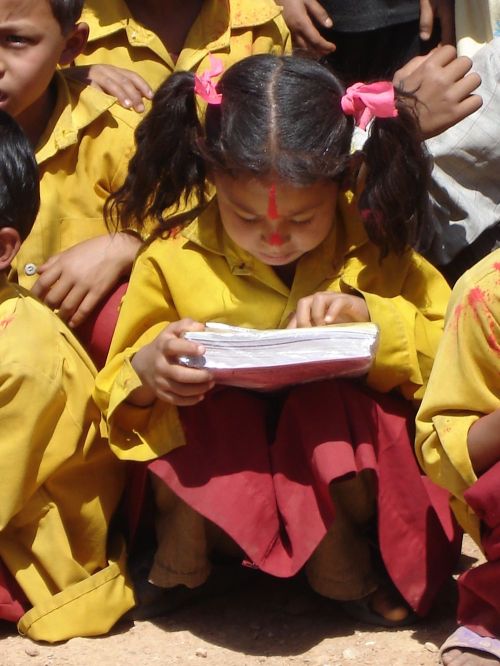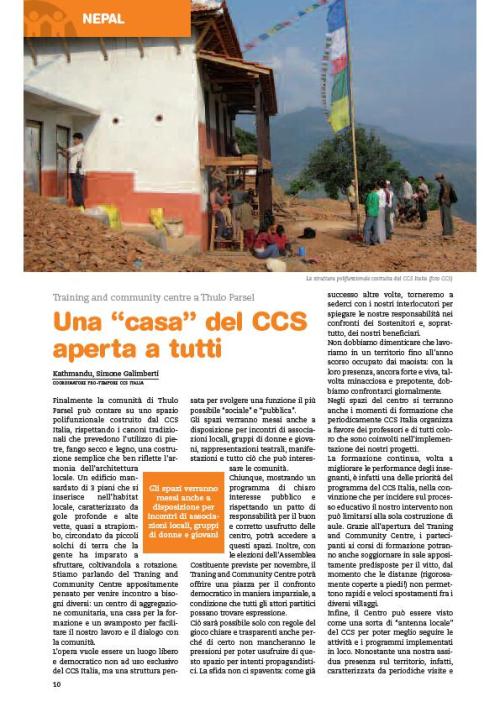We received 
Dear NGO
I remember with joy when we collaborated in 2006 with your NGO in planning new methods to increase quality education in the schools you are supporting in Kavre District. My friends in TU and me were very sad to know of changing programs and management occurred from 2007 in CCS Italy INGO which stopped our projects and some of yours.
As we agreed, your fundamental work to improve educational structures in Timal, building and restoring schools could not be completed without an efforts in improving the way and quality of studying as several works suggest.
At that time you and TU (Tribhuvan University) team were engaged to create a new sample of training methods for teachers and principals in order to establish new relations among students and teachers and new ways of teachings.
Remembering those discussion and positive ideas, which are still on date, I should like to share with you some suggestions coming form a study on education in India, hoping that our government too start to consider education and its quality a priority in political agenda.
In India as in Nepal enrolment has increased tremendously in the past couple of decades and today parents largely see it as a bounden duty.
In India some data are really impressive: The number of students enrolled in elementary education (classes 1 to 8) was about 1.9 crore in 1951. It is now estimated at over 13 crore, about seven times more.
The proportion of students enrolled for class 1 to 5 in the total number of children in the 6-11 years age group, called the Gross Enrolment Ratio (GER) for that age group, is about 107%. That means virtually all children in this age group and some who are older but in these classes are enrolled in schools.
But as in Nepal, for class 6 to 8, this proportion, for the age group 11-14 years, falls to about 70%. It continues falling in the next stage of class 9 to 12 also – just about touching 40%. By the time we reach higher education, the proportion of students has fallen to an abysmal 10%.
This data, as you know, are similar to Nepal and we discussed the way to avoid the drop-out. You implemented the project to establish an higher secondary school (10+2) in Timal to assure high education opportunity for poor and remote students. That was a way to reduce the drop-out and it is very negative that CCS Italy INGO suspended the support to this project.
No opportunity to access to higher education create and perpetuate endemic divisions that make one section of people disadvantaged or under-privileged especially in remote areas. This comment means that in both countries a large amount of young people are out of the system and without education.
This is represented in India by the rural-urban chasm. Back in 1951, 35% of urban residents were literate, but only 12% of rural people. In 2006, 80% of urbanites were literate but in rural areas the literacy rate was still far behind – at 59%. The gap is almost of the same order as in 1951. The same data is found in Nepal.
Another persistent division leaves the most socio-economically backward castes and tribal communities at a disadvantage. Among scheduled castes, the literacy rate was 55%, while among scheduled tribes it was 47% in 2006. These are way behind ‘other backward classes’, which have a literacy rate of about 66%, and all the remaining castes, which have the highest literacy at over 78%.
We appreciated, in fact, your work in Timal and your attention to alleviated the burden of education (through distribution of materials to students, coaching classes, and teacher salaries in community schools) to the poorest family which belong to Tamang, Magar and Dalit groups. According to an ASSOCHAM India survey, the costs of sending a child to school have risen by 160% in the last 8 years and without support to family the drop-out rate is going to increase as you showed in your study which compare the state of education in some Timal VDCs before your project and after. So it is really a shame CCS Italy INGO decided to stop books distribution to children in Timal with the new italian management.
In fact, the Indian survey states, there is the rich-poor divide. Among the poorest third of our society, literacy is only about 46%. In the middle third it improves to 65%, while among the richest third of the population, it is over 72%.
In India they did:
-The high rates of enrolment at the primary stages across the country, and their continued stability, has a ready explanation – the mid-day meal scheme, launched by the government in its present form after a Supreme Court order in 2001. As unfortunately you did in Timal before it was cut by CCS Italy INGO.
-Another event that will have a long-term effect is the inclusion of the right to education as a fundamental right in 2002. The provision, in its final form was restricted to children in the age group 6-14 years This has led to the government dragging its feet in getting it off the ground. Implementation would mean that the government would be accountable to the courts if children were left out
Thanks to these general provisions India was able to improve quantitatively its education system. But some data suggests that quality in education is still low. Then there is the question of relevance of education – after all it is being sought primarily to get a good job. A recent National Sample Survey report found that unemployment among youth was highest among graduates, post-graduates and technical diploma or certificate holders – in the range of 19-20%. This is way above the current unemployment rate of about 6% for this age group. The reasons for this are that in most cases the educational qualifications and job requirements don’t match.
This is the reason it would have been wise to work on our project on quality education. I hope the new appointed and too much paid officers of Centro Cooperazione Sviluppo INGO sleeping in Kathmandu office begin to learn how to be useful for people and not only for themeselves.
Friendly wishes
Dr. Satish Koirala
Educationalist-Kathmandu













